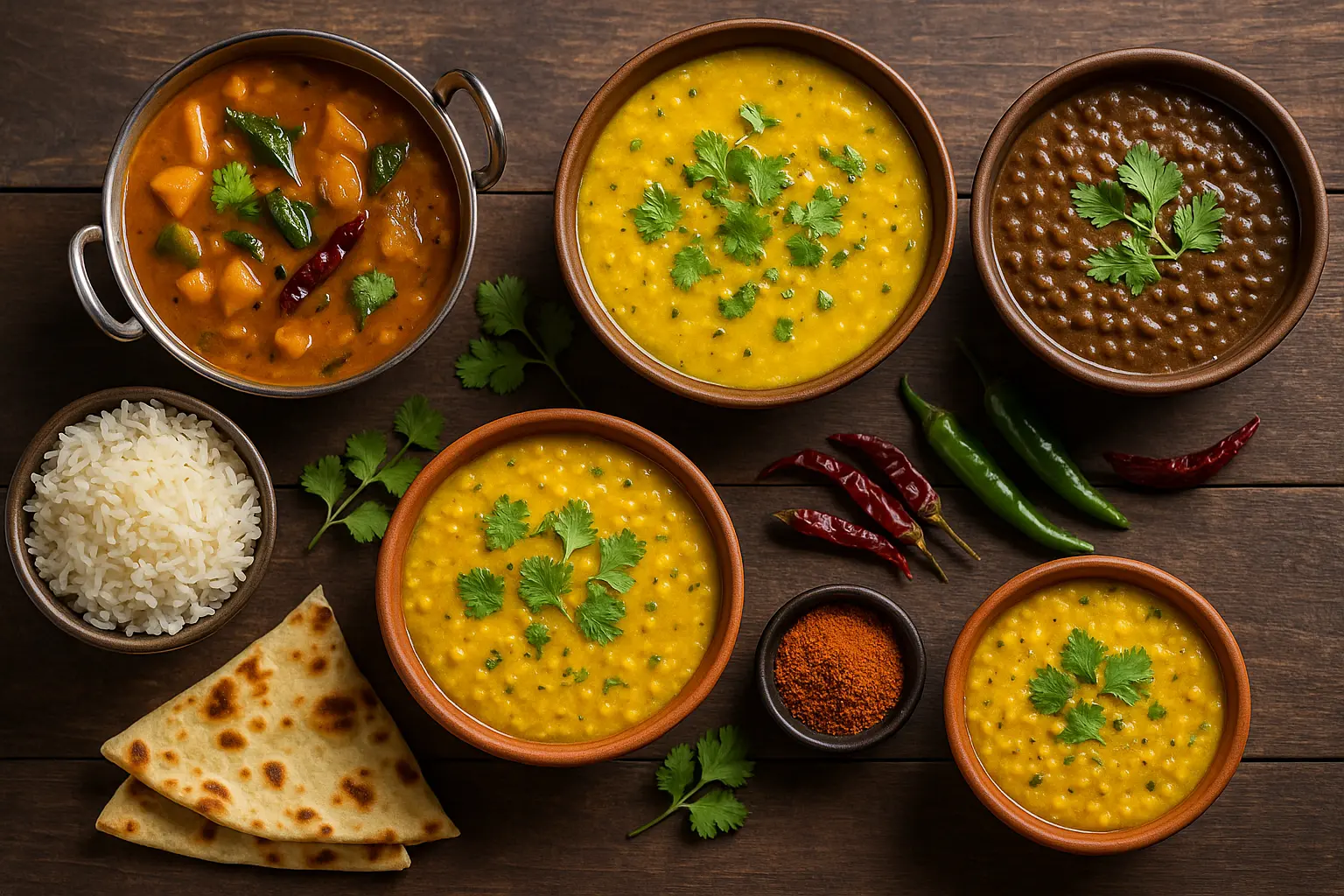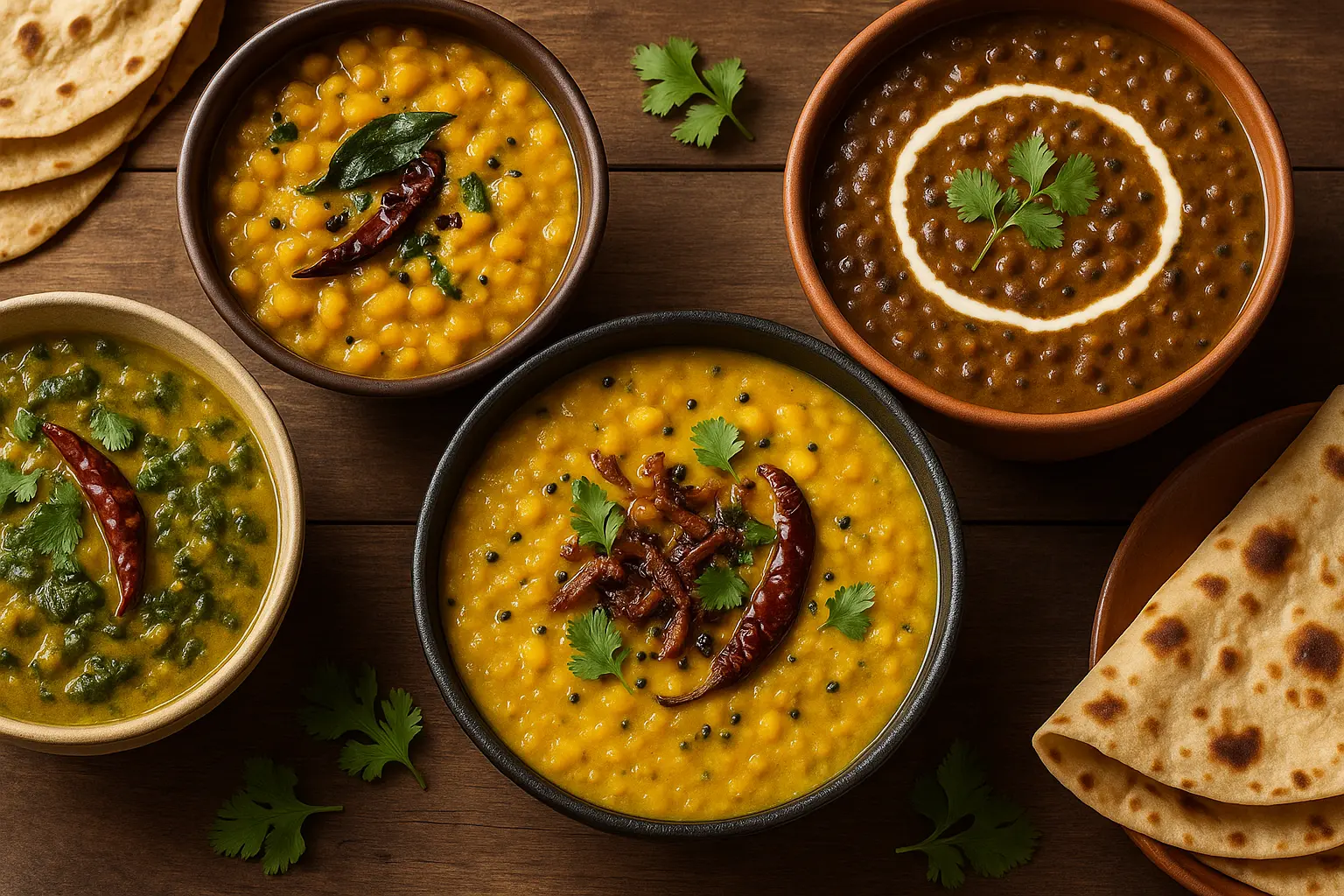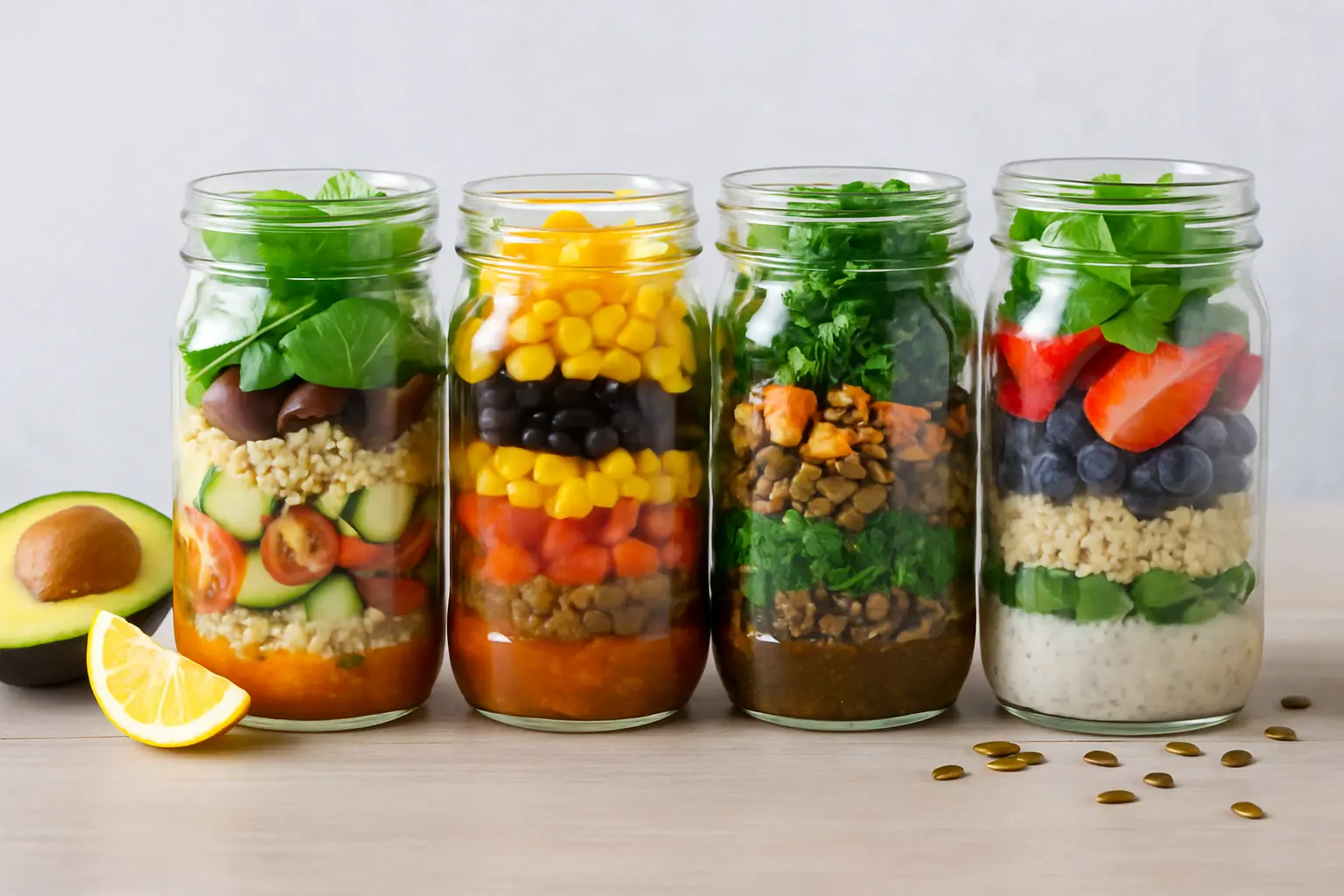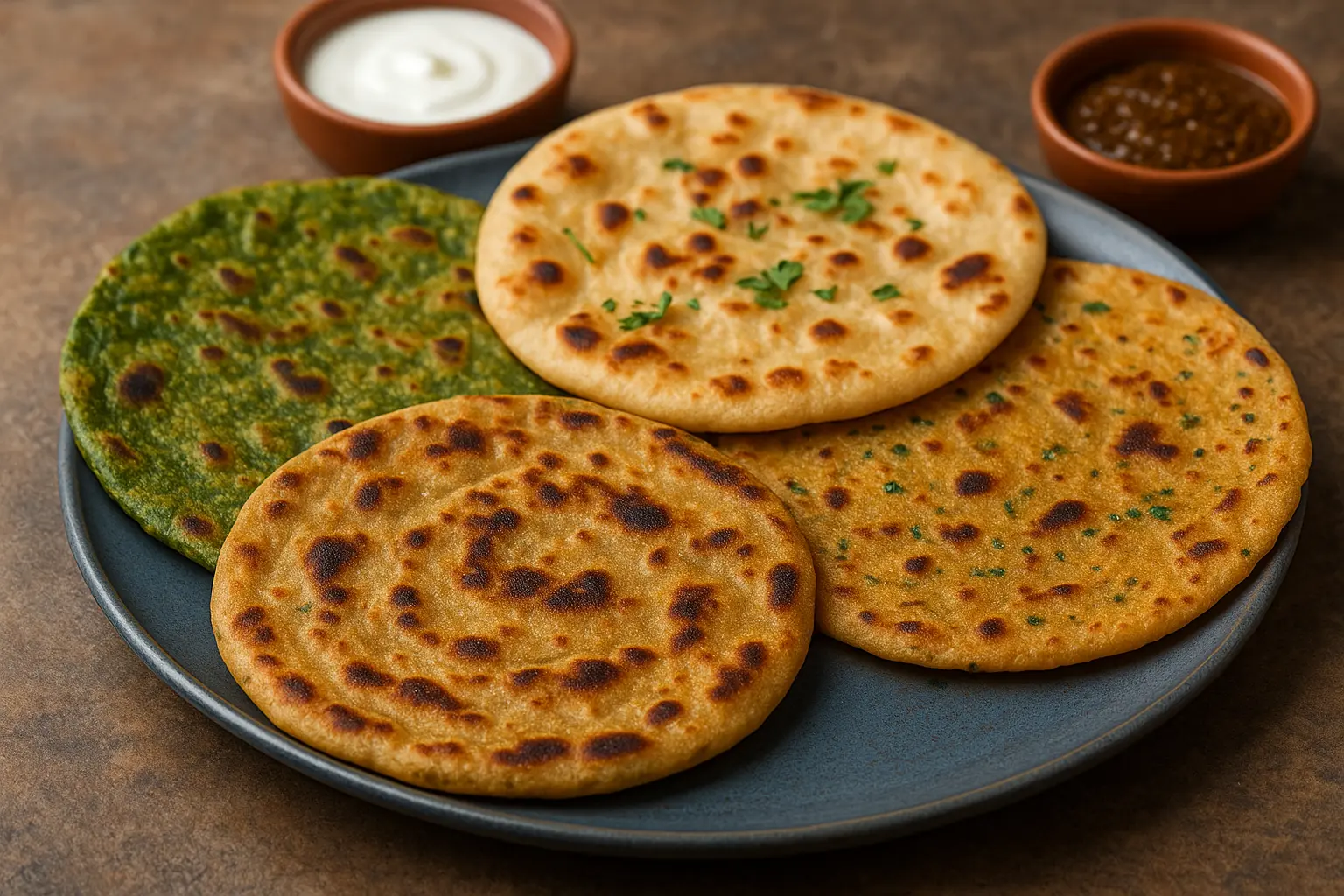When the evenings grow cooler and you crave something hearty yet nourishing, Indian lentil stews (commonly known as dal) provide the ultimate comfort. Across India’s vast culinary landscape, lentils and legumes are a cornerstone of daily meals. They are simmered with fragrant spices, paired with rice or flatbreads, and served in ways that vary by region, season, and tradition.
What makes Indian lentil stews so appealing isn’t just their warm, homely flavors but also their versatility. From the golden, buttery richness of Punjabi dal makhani to the tangy tamarind-spiced sambar of South India, lentil stews adapt beautifully to diverse tastes. They are vegan-friendly, naturally gluten-free, and brimming with protein and fiber — making them an excellent choice for both health-conscious eaters and lovers of hearty meals.

The Cultural Significance of Lentils in Indian Cuisine
Lentils (dal in Hindi) are more than just an ingredient — they are an everyday necessity in Indian kitchens. Rich in protein and affordable, they serve as a vital source of nutrition, especially in vegetarian households. Every region of India boasts its own style of preparing lentils, influenced by local produce, spices, and traditions.
North India: Stews like dal tadka (tempered yellow lentils) and dal makhani (creamy black lentils) dominate tables, often enjoyed with roti or naan.
South India: Sambar and rasam, both spiced lentil-based soups, are staples, usually paired with rice or idli (steamed cakes).
Western India: Gujarati dal is slightly sweetened with jaggery, balancing flavors of spice and tang.
Eastern India: Bengali cuisine highlights chholar dal, often enriched with coconut and spices.
Lentils also feature heavily in religious rituals, festive meals, and even Ayurvedic diets where they are chosen for their grounding, balancing qualities.
Understanding Indian Lentils
Before diving into recipes, let’s look at the most common lentils used in Indian stews:
Toor Dal (Pigeon Pea Lentils): Yellow and slightly nutty, these are the base of South Indian sambar.
Moong Dal (Split Yellow Lentils): Light and easy to digest, perfect for quick cooking and Ayurvedic diets.
Masoor Dal (Red Lentils): Earthy flavor, cook quickly, and great for simple weekday stews.
Chana Dal (Split Chickpeas): Hearty and slightly sweet, common in chana dal curry.
Urad Dal (Black Gram): Used in rich dishes like dal makhani.
Whole Moong & Masoor: Retain skins for added fiber and earthy flavor.
Each lentil type imparts a unique texture, cooking time, and taste profile, making them central to regional specialties.
Essential Spices & Flavor Bases
A true Indian lentil stew isn’t complete without spices. These don’t just add flavor — they bring warmth, depth, and balance.
Cumin seeds & mustard seeds: For tempering.
Turmeric: Earthy golden base and health booster.
Asafoetida (Hing): A pinch adds depth, especially in vegan stews.
Coriander, cumin powder, garam masala: Ground spices for body.
Tamarind, tomatoes, or lime: For tanginess.
Fresh herbs: Coriander leaves, curry leaves for finishing.
Chilies: Both green (fresh heat) and red (smoky warmth).
The balance of these spices determines whether your stew is hearty, tangy, rich, or light.
Recipes: Indian Lentil Stews for Cozy Nights
Here we’ll dive into detailed recipes.
1. Classic Dal Tadka (Yellow Lentil Stew with Tempered Spices)
A restaurant favorite and home staple, dal tadka is made with moong or toor dal simmered with turmeric, then finished with a sizzling tempering of ghee, cumin, garlic, and chilies.
Ingredients:
1 cup toor dal or moong dal
3 cups water
1 medium onion, chopped
2 tomatoes, chopped
1 tsp turmeric
1 tsp cumin seeds
4 garlic cloves, sliced
2 green chilies, slit
2 tbsp oil or ghee
Fresh coriander
Method:
Pressure cook dal with water and turmeric until soft.
Mash lightly and simmer with onion and tomato.
Heat ghee, add cumin, garlic, chilies — pour over dal.
Garnish with coriander.
Serve hot with steamed basmati rice or roti.
2. Dal Makhani (Creamy Black Lentils)
Rich, buttery, and slow-cooked, dal makhani is a North Indian delicacy.
Key Steps:
Use whole urad dal and rajma beans, soaked overnight.
Cook slowly with onions, ginger, garlic, tomatoes, and spices.
Finish with cream or cashew paste (for vegan version).
The result is a luxurious, cozy stew perfect for special dinners.
3. South Indian Sambar
A tangy, spiced stew of toor dal, tamarind, and vegetables.
Simmer dal until soft.
Add tamarind water and sambar masala.
Cook with drumsticks (vegetable), okra, or pumpkin.
Finish with a mustard seed-curry leaf tempering.
Served with rice, dosa, or idli.
4. Gujarati Sweet-Tangy Dal
A unique balance of jaggery (unrefined sugar), tamarind, and spices. This stew is lighter, often enjoyed with plain rice.
5. Chana Dal Stew with Spinach
A hearty, protein-packed stew with added greens for nutrition.
6. Bengali Chholar Dal (Coconut & Lentil Stew)
Cooked with chana dal, spiced with cinnamon, bay leaves, and garnished with coconut.
7. Simple Masoor Dal (Red Lentil Stew)
Perfect for weeknights — cooks in under 30 minutes, flavorful, and comforting.
8. Moong Dal Khichdi (Comfort Stew with Rice)
A one-pot stew of moong dal and rice, often spiced lightly and served with ghee. Great for cozy, healing meals.
Pairing Ideas
With Rice: Steamed basmati, jeera rice, lemon rice.
With Flatbreads: Chapati, naan, paratha.
Sides: Pickles, papad, raita, or sautéed greens.
Tips for Cooking & Storage
Always soak lentils when possible to reduce cooking time.
Use pressure cookers or Instant Pots for convenience.
Store leftovers in airtight containers — most stews keep 3–4 days.
Freeze portions of dal for up to a month.
Lentil Stews in Ayurvedic Perspective
Moong dal: Sattvic, light, balances all doshas.
Toor dal: Warming, grounding.
Chana dal: Heavy but nourishing.
Spices like ginger, turmeric, and cumin aid digestion, making lentil stews not just filling but also healing.
Creative Twists on Traditional Lentil Stews
Fusion Dal Soup: Add coconut milk and lemongrass for Thai-inspired dal.
Smoky Dal: Finish with smoked paprika or charred garlic oil.
Winter Vegetables Dal: Add carrots, spinach, or kale for a hearty mix.
Conclusion
Indian lentil stews are more than just dinner — they are bowls of culture, nutrition, and comfort. Whether you lean towards the tang of sambar, the richness of dal makhani, or the simplicity of red lentil dal, there’s a version for every mood and season.
Next time you crave a cozy night in, simmer a pot of lentil stew. Pair it with rice or bread, garnish with herbs, and enjoy the warmth of centuries-old tradition in every bite.
Leave a comment
Your email address will not be published. Required fields are marked *




















